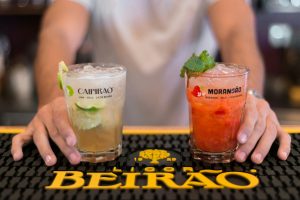Bryony Balmforth, Director at BAND, accountants and business advisors to the entertainment industry, explains this year’s changes to alcohol duty and how festivals need to keep an eye out for the changes in consumer behaviour they might accelerate.
From 1st August this year the UK saw an increase in the rate of alcohol duty following six years of freezes. The new system is hailed as a simplification, with fewer categories and rates set proportionally to ABV as opposed to by product type.
Critically, rates are now set irrespective of whether they are applied to wines, spirits, champagnes, ciders or beer.
In contrast to the old approach, duty is now payable per litre of alcohol contained in the product rather than per litre of product.
You may remember Rishi Sunak and Jeremy Hunt claiming that the impact on hospitality businesses and their customers would be negligible to the hospitality sector while yielding a 10.1% rise in alcohol duties overall. Jeremy Hunt told us “The changes we’re making to the way we tax alcohol catapults us in to the 21t century reflecting the popularity of low-alcohol drinks and boosting growth in the sector by supporting small producers financially”.
What are the specific impacts and concessions?
Drinks with ABV below 3.5% are now taxed at a lower rate than they were at the start of this year whereas duty on drinks with an ABV of more 3.5% has risen by 10.1%
Taking wine first, what this means in practice is that still wines below 11.5% ABV have become cheaper but higher strength wines have become more expensive- particularly fortified wines at 20%+ ABV.
Most wine (with an ABV between 11.5% and 14.5%) has seen an increase in around 44 pence per bottle / 20% increase in duty paid.
However, at the other end of the scale, sparkling wines and some lower ABV spirits have become cheaper as a result of the de-productisation.
Focussing on the beer/ cider / spirit market, the most notable changes are set out below along with sparkling wine just to provide a benchmark:
| ABV | Product | Volume | Price difference |
| 4% | bottle beer | 500ml | 5 pence extra |
| 5% | Bottle cider | 500ml | 5 pence extra |
| 40% | Whisky shot | 25ml | 3 pence extra |
| 11% | Still wine | 250ml | 5 pence extra |
| 37.5% | Vodka | 700ml | 76 pence extra |
| 12% | Sparkling wine | 750ml | 19 pence less |
| 5.4% | Spirit based mixer can | 250ml | 6 pence less |
Alongside these changes there are two notable concessions.
Bars now benefit from a draught relief which means that the cost of a pint of 4% ABV draught beer has not changed since the start of the year. (Note no discount either but we should take the positive.) The rationale behind this discount being a Tory initiative to support the hospitality industry as part of their Brexit pledge.

The second significant concession is for low and lower alcohol beer with an ABV of lower than 3.5%, which is now taxed at almost £10 less per litre. This provides low alcohol brewers with a much more attractive proposition when identifying margins.
What has the response been?
Carlsberg’s Marston Brewing Co (CMBC) has already announced a recipe change for its Danish pilsner which will reduce ABV from 3.8% down to 3.4%. This translates to a saving of 21p per 440m can which is huge in margin terms. The question is will the customers notice, care, and will they continue to buy? If the answer to this is yes will other brewers follow suit and will we see a corresponding influx of new entrants to the markets?
Currently the most popular beers sit in the 3.5% beers to the 4% range so how much does that extra 5% matter to the average consumer and will those wanting to stick with the higher ABV still be able to compete in the altered dynamic? Either way brands will be watching Carlsberg closely to decide their own next moves.
The alcohol free and low alcohol market was worth £255m in 2022 and is growing rapidly. IWSR data shows consumption of these products will increase by a third by 2026 so festivals should also be taking note of these trends and catering accordingly.
According to research by Circana regular beer sales were down 6% during the 12-month period to May 2023 while no and low alcohol alternatives saw a 6% increase in the same period. It seems that consumer preferences are changing at the same time as brewers are being incentivised via tax cuts to cut ABV.
So, what does this mean for festivals?
Typically, festivals operate based on a tiered agreement with bars. The higher the bar take, the more the festival earns. Any increase in product cost created by increased duty is passed from brewer to bar to consumer. Where prices can be maintained to maximise sale volumes and margins no dilution will be felt. Where duty savings coincide with solid pricing and no reduction in consumer demand it’s a win win for the bars and festivals and could overall be a positive change.
While a more health-conscious trend is clearly making headway, we are also seeing that while people on the whole may be drinking less, they are also happy to spend more on a higher quality or premium drink when they do go out.
Festivals can cater to this market by highlighting their premium drinks offerings either in isolation or with a premium ‘experience’ alongside.
Additionally, the no/ low ABV market is clearly gaining a voice and also needs representation in order to maximise returns in this area. The days of mocking the designated driver are well and truly over and festivals need to be ahead of the movement.
Whether positivity is maintainable as we go into 2024 and can expect more people to lose the protection of fixed rate mortgages remains to be seen, but some cautious optimism would perhaps not be untimely.
If nothing else, it seems clear that the influencers in this market are much broader than just duty. Due consideration should be given to product choice, experiential offerings, and pricing on a festival by festival basis to ensure the best chance of maximising bar revenues in 2024.
In the meantime, prosecco anyone?






